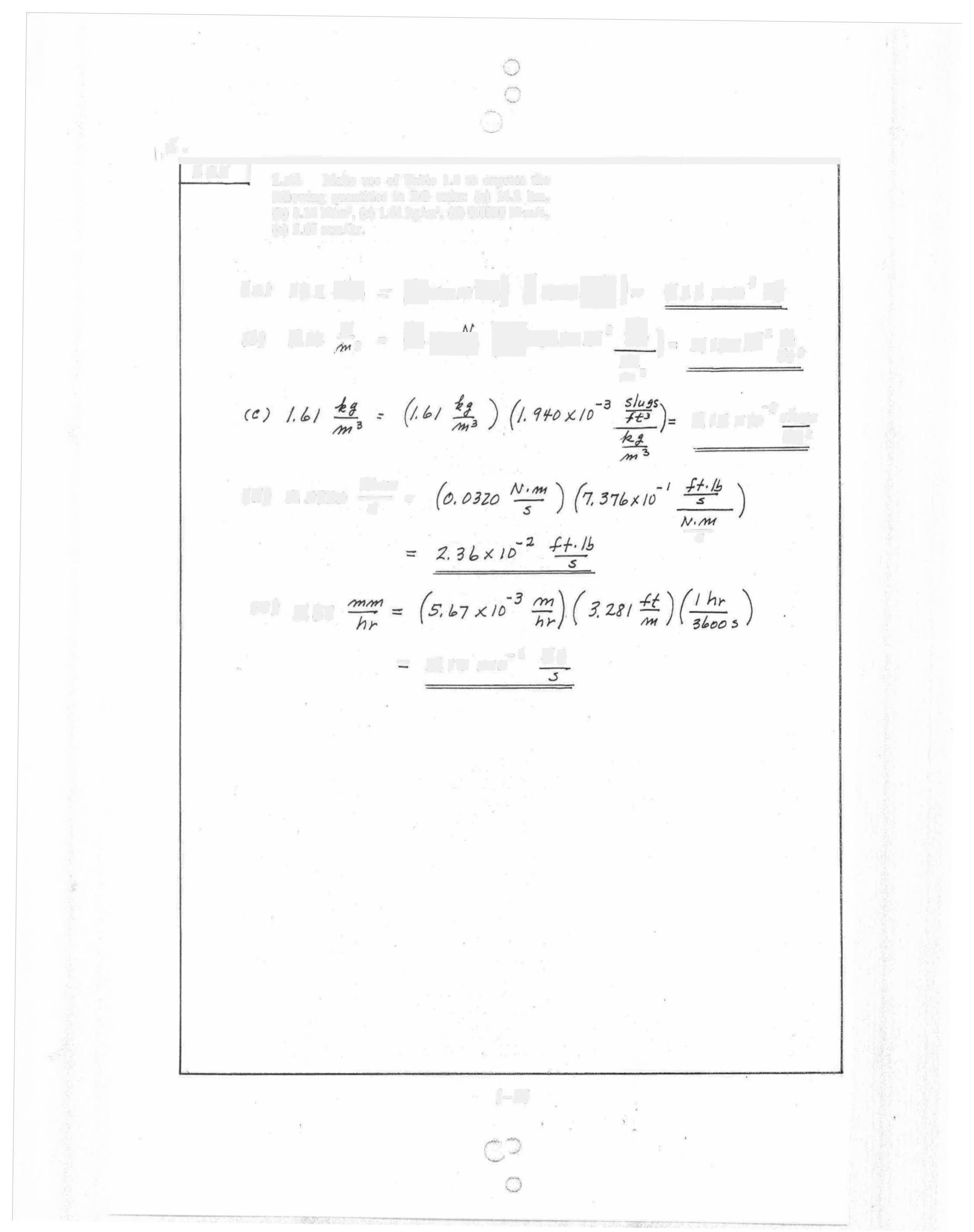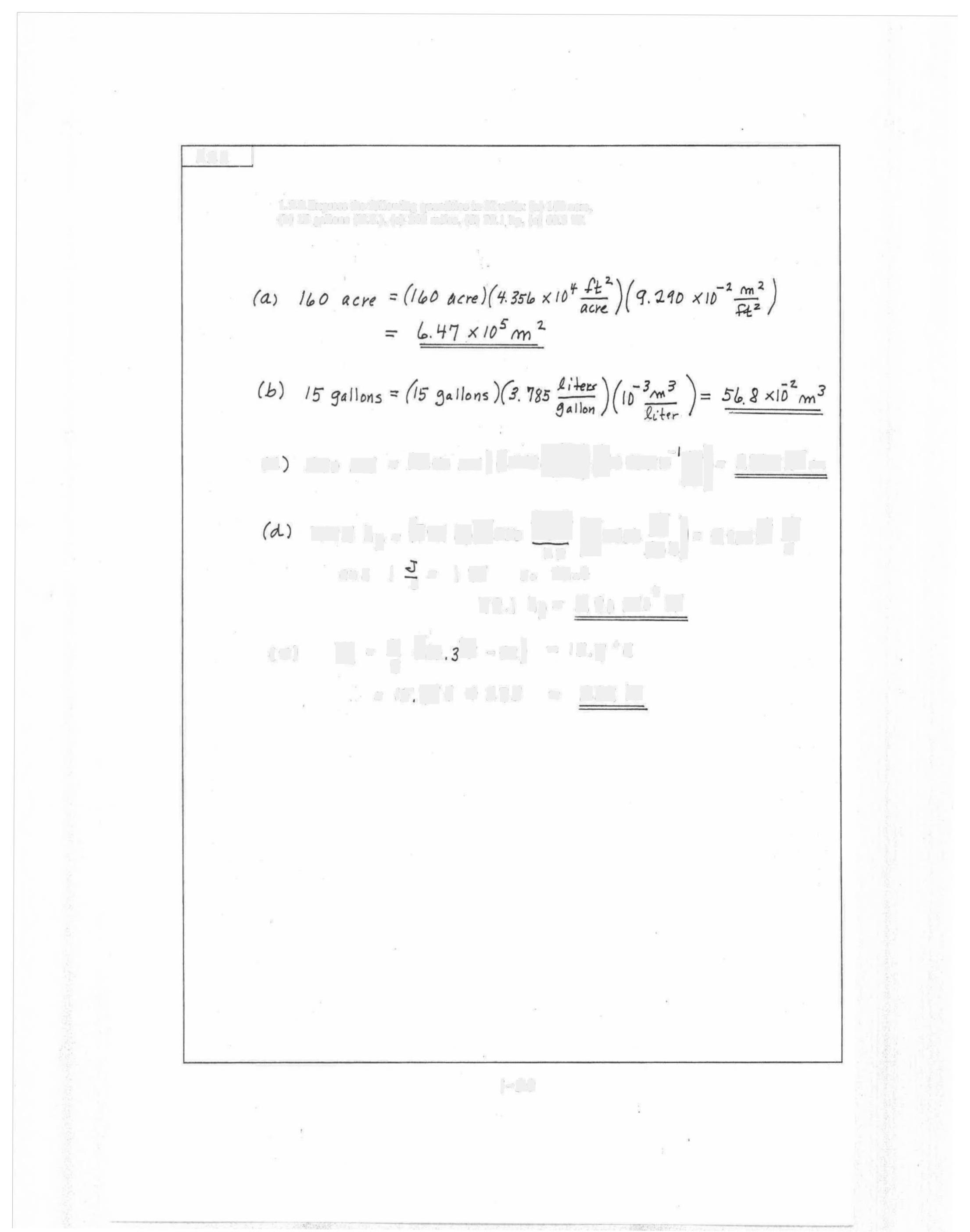Solution Manualfor Fundamentals ofFluid Mechanics 7th Edition by Munson Rothmayer Okiishi
Huebsch ISBN 1118116135 9781118116135
Full link download Solution Manual: https://testbankpack.com/p/solution-manual-for-fundamentals-of-fluid-mechanics-7th-edition-by-munson-rothmayer-okiishihuebsch-isbn-1118116135-9781118116135/
II
1.1 Toe force, F, of the wind blowing against a building is given by F= C,pVA/2, where Vis thewind speed, p thedensity of theair, A the cross-sectional area of the building, andCois aconstant termed the drag coefficient Detennine the dimensions ofthe drag coefficient. or
C,=2F/0VA, where F =ML7T @= L° V:LT' Thus A>L? J 0, =(LT"/[(L?@Lr°0] -Mt"7T"° Hence , is dimensionless.
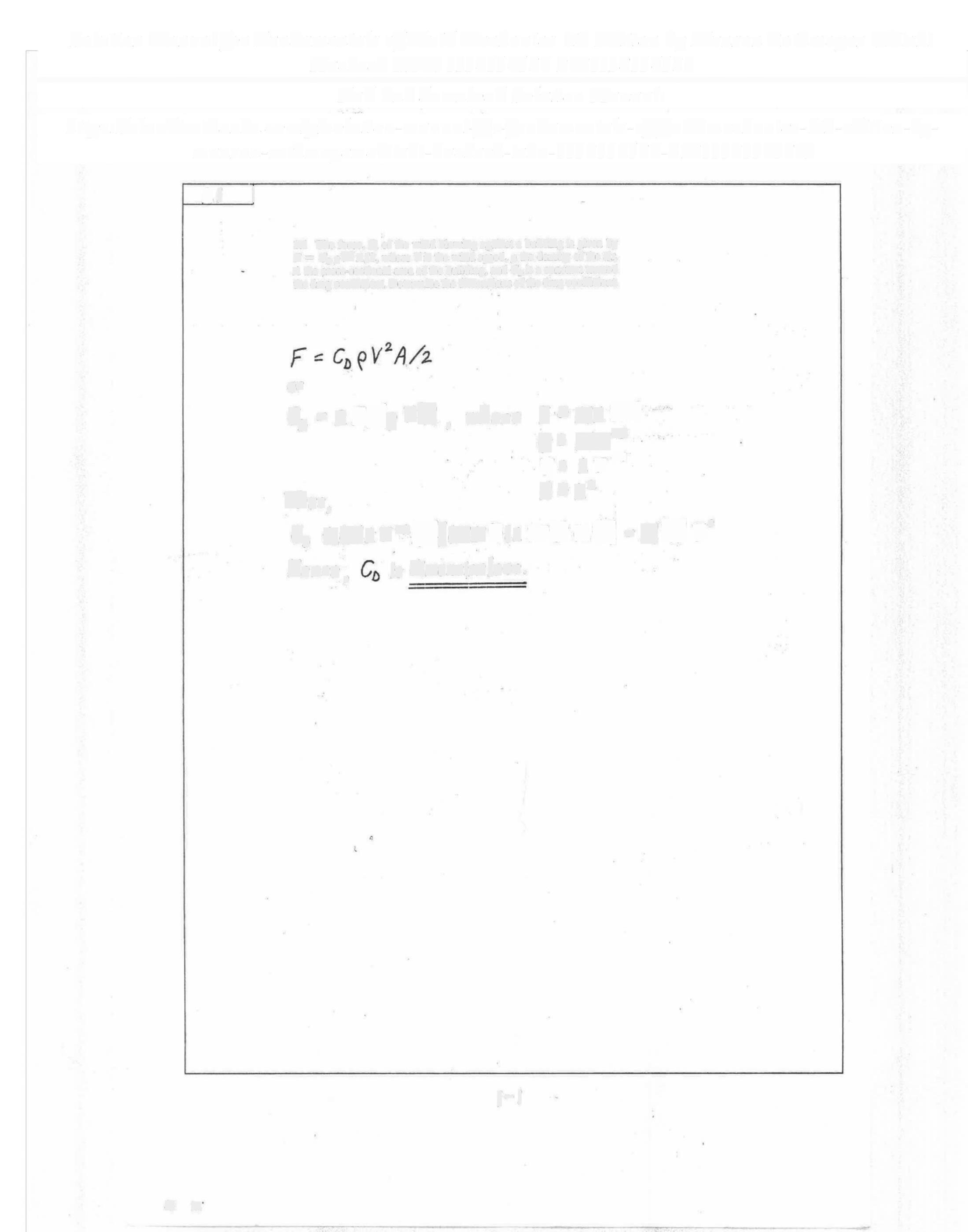
1.Z Determine the dimensions, in both the FLT system and the MLT system, for (a) the product of mass times velocity, (b) the product of force times volume, and (c) kinetic energy divided by area.
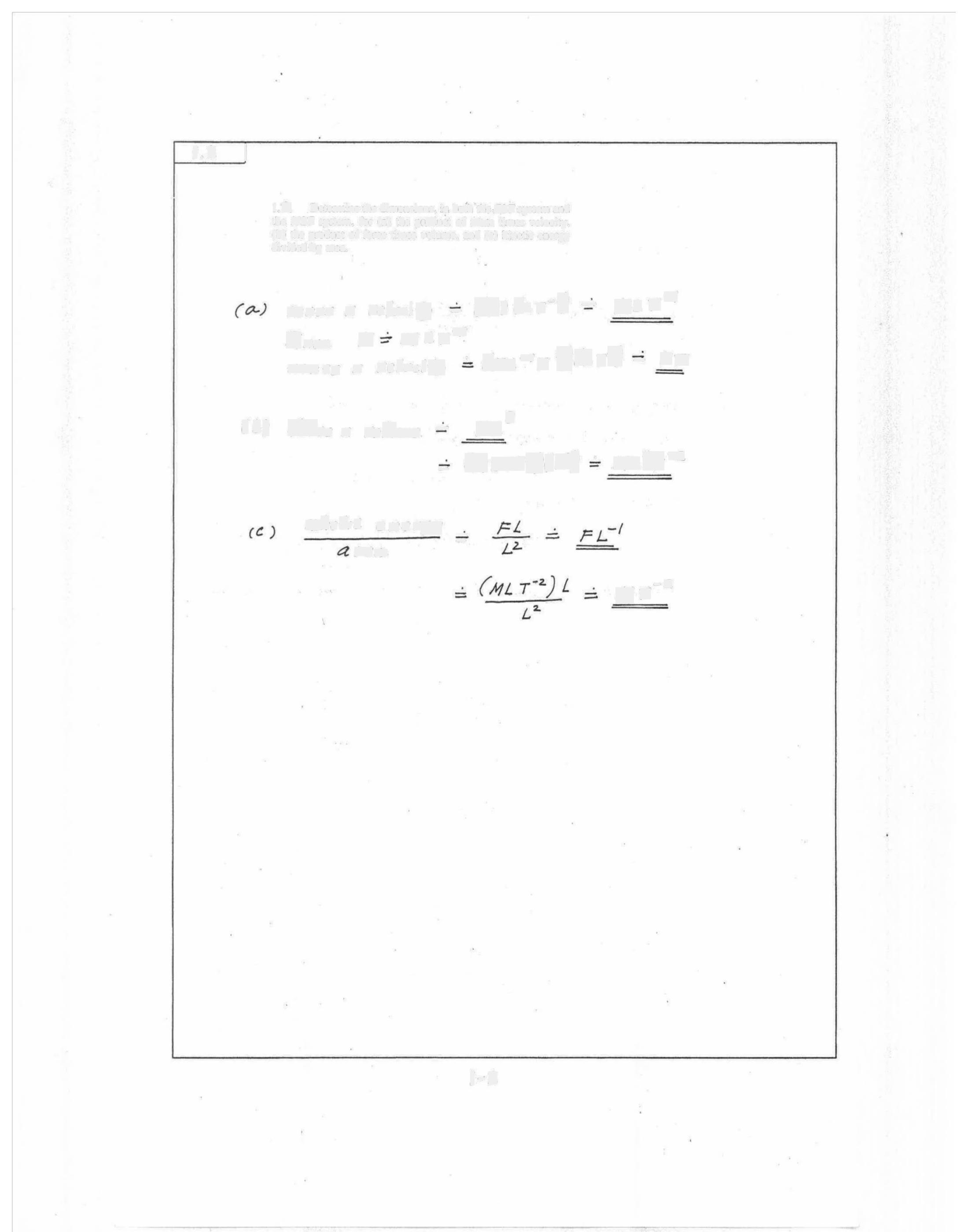
I 3 Verify the dimensions, in both the FLT and MLT systems, of the following quantities whichappear in Table 1 1: (a) vol• ume, (b) acceleration, (c) mass, (d) moment of inertia (area), and (e) work.
Volume• ••
(6) acceleration = lime rle of chang o+ vuloci+
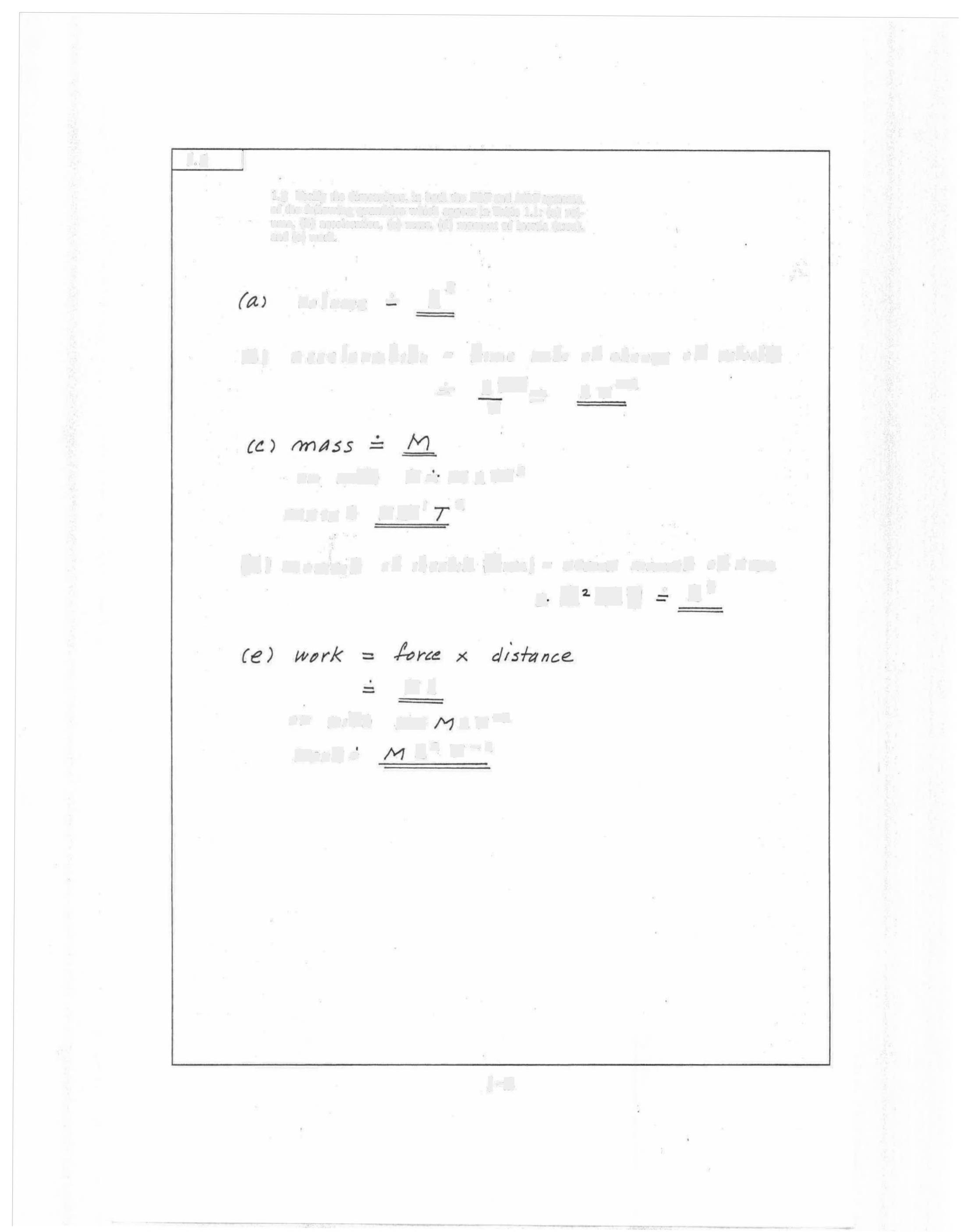
-
-. L7' T Lr?
or wt F ±MLT?
0nAs3± EL'?
(d) moment uf tier±r ~ (rec) = second moment of arc =(0)- L'
F L
er with -: LT?
Work5 LR T-?
1 4 Determine the dimensions, in both the FLT system and the MLT system, for (a) the product of force times acceleration, (b) the product of force times velocity divided by area and (c) momentum divided by volume
(a) Force < acceleraho (F)(LT3) - FLT ?
force accelerahon = (nr(tr)- L'
(5) are velocity (F)(LT') pt'7' a.re0
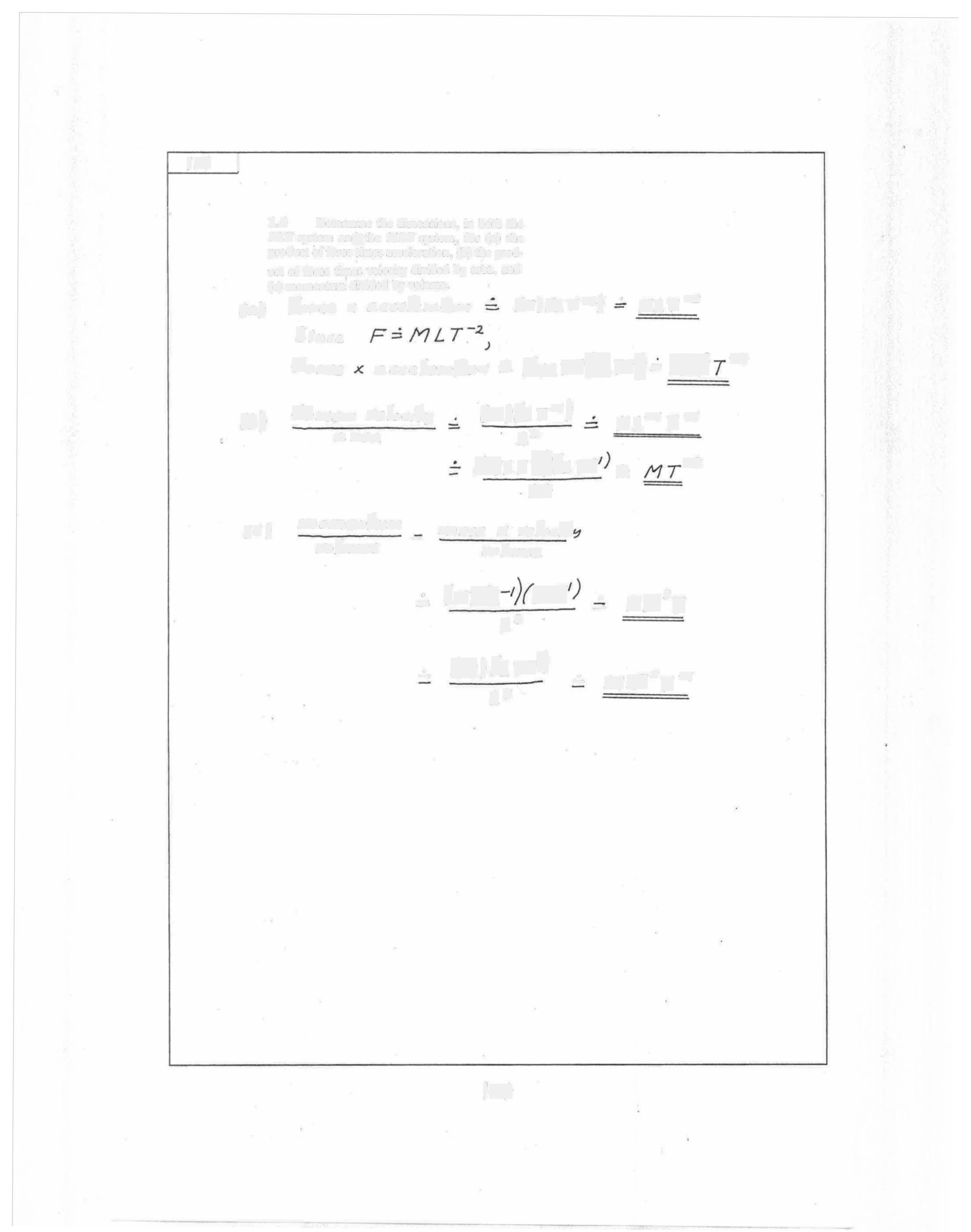
mass x veloci volume
L?• FL?r ML'r'
1 5 Verify the dimensions, in both the FLT and MLTsystems, of the following quantities which appcar in Table 1 1: (a) angular velocity, (b) en• ergy, (c) moment of inertia (area), (d) power, and (e) pressure
(b) ener<> Capacih of body he do work
S7ce ovk = Fore < dis#ante, cner = FL er it p- ML7?
cncn = (ML7(t) = Lr?
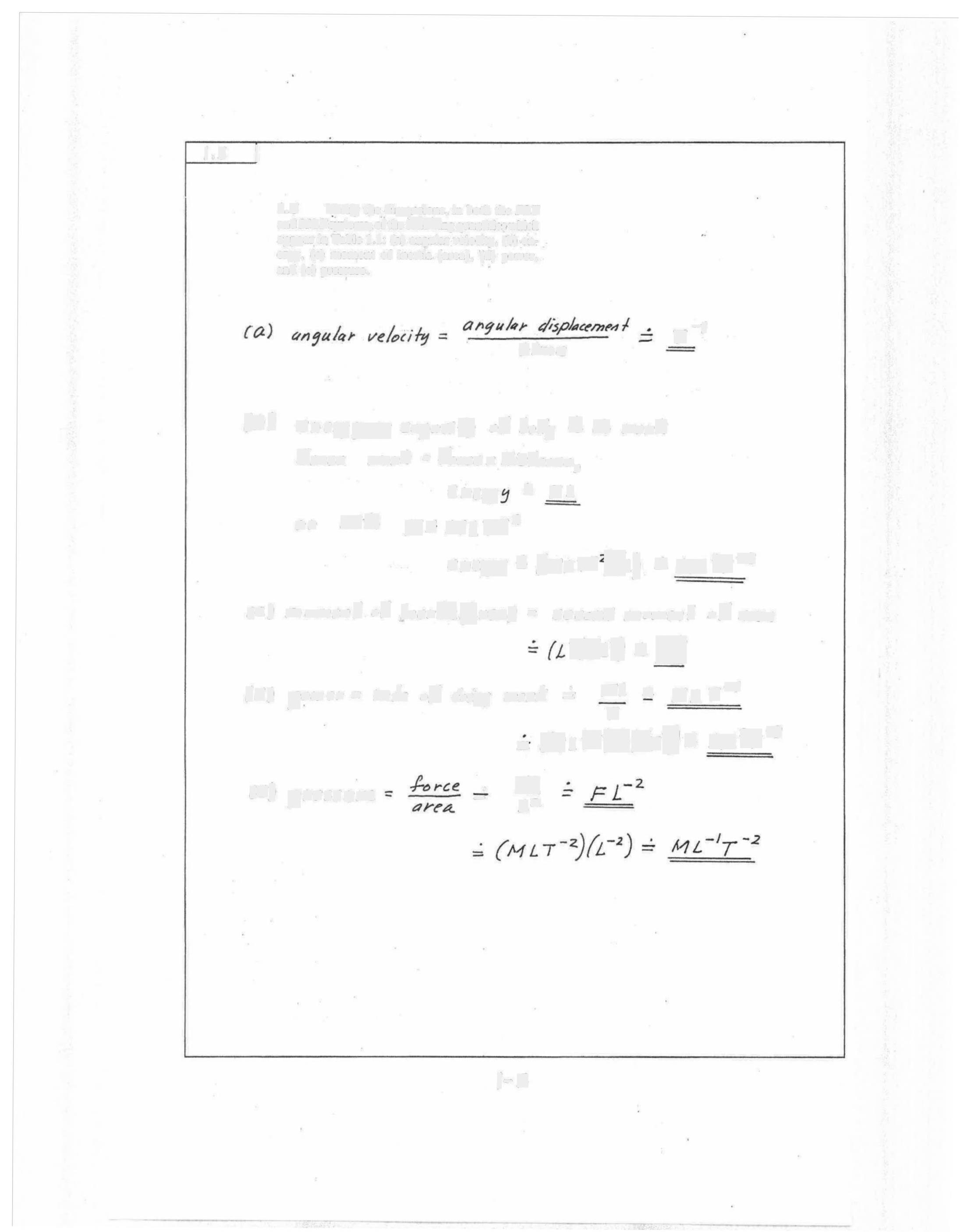
Cc) mmen+ el inert(are) = second memen# e# ara 4e)- L'
( d. ) power - atI e o, I dIe/n • workKI, FL .:. FLT' T
- 06Lr(/r')- gr3 , F Lz
1 6 Verify the dimensions in both the FLT system and the MLT system, of the following quantities which-appear in Table 1.1: (a) fre• quenay,(b) stress, (c) strain, (d) torque, and (e) work
() cycles _ -/ +in€
(6) shres54ore . F re L7F7?
Smc¢ F±LT2 LT? #ess = - L"7'72 L
cc) strain ChAnne in lenth /en4th kt (aerate) FL
(&) erk = force s dishane = FL -(ur)/L)=- Mgr?
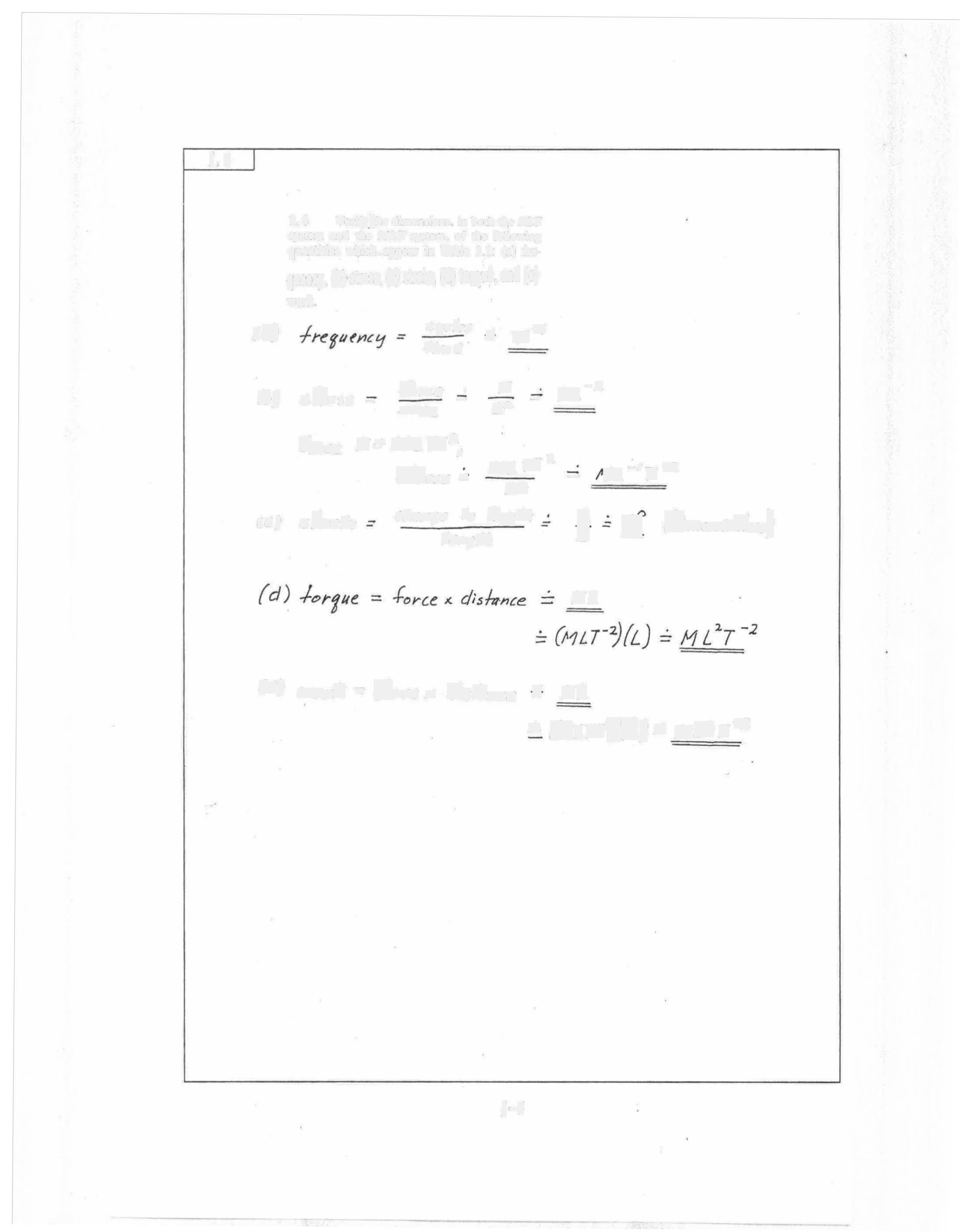
1.7 If is a velocity,x a length, and ta time, what are the dimensions (in the MLTsystem) of (a) au/at, (b) aulaxat, and (c) f (0ult) dx? (a)

I 8 Verify the dimensions, in both the FLT system and the MLT system, of the following quantities which appear in Table 1 1: (a) acceleration (b) stress, (c) moment of a force, (d) vol• ume, and (e) work

(a) acceleration velocil +im€ 72
(5) bes5 = 4Force are ;= FL7? L•
C) ml of a rce = 4oyce x dshncc FL =(Lr?)Ls Lr?
() Vo luu me
(e) work = force x dshancc FL

(a) dP• dx E~ FL7? L
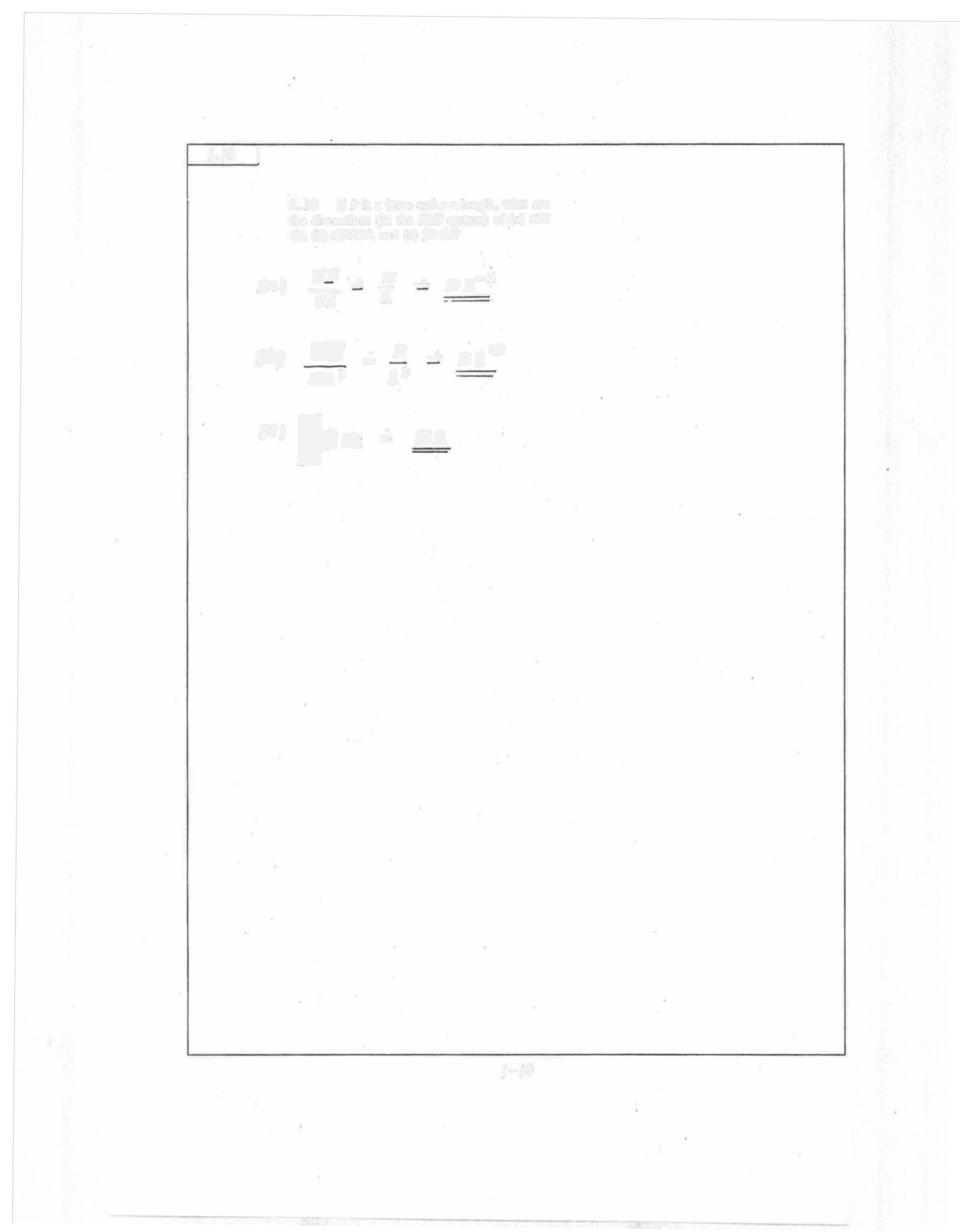
(b) P . E . FL° d ° L3
cc) [ea. FL
1 14 If Vis a velocity, € a length, and v a fluid property (the kine• matic viscosity) having dimensions of ET', which of the fol• lowing combinations are dimensionless: (a) VE, (b) V&/v, (c) Vy, (d) V/6v?
(a) V{' (r)(cr' - ['T-4 (not diensiless)
a6) v8 - (Lr(L. L°7° (dimensionless)
2/ (7' (d) V . fr') , -2 gV (4)(er-') - L (nf deosjonless)
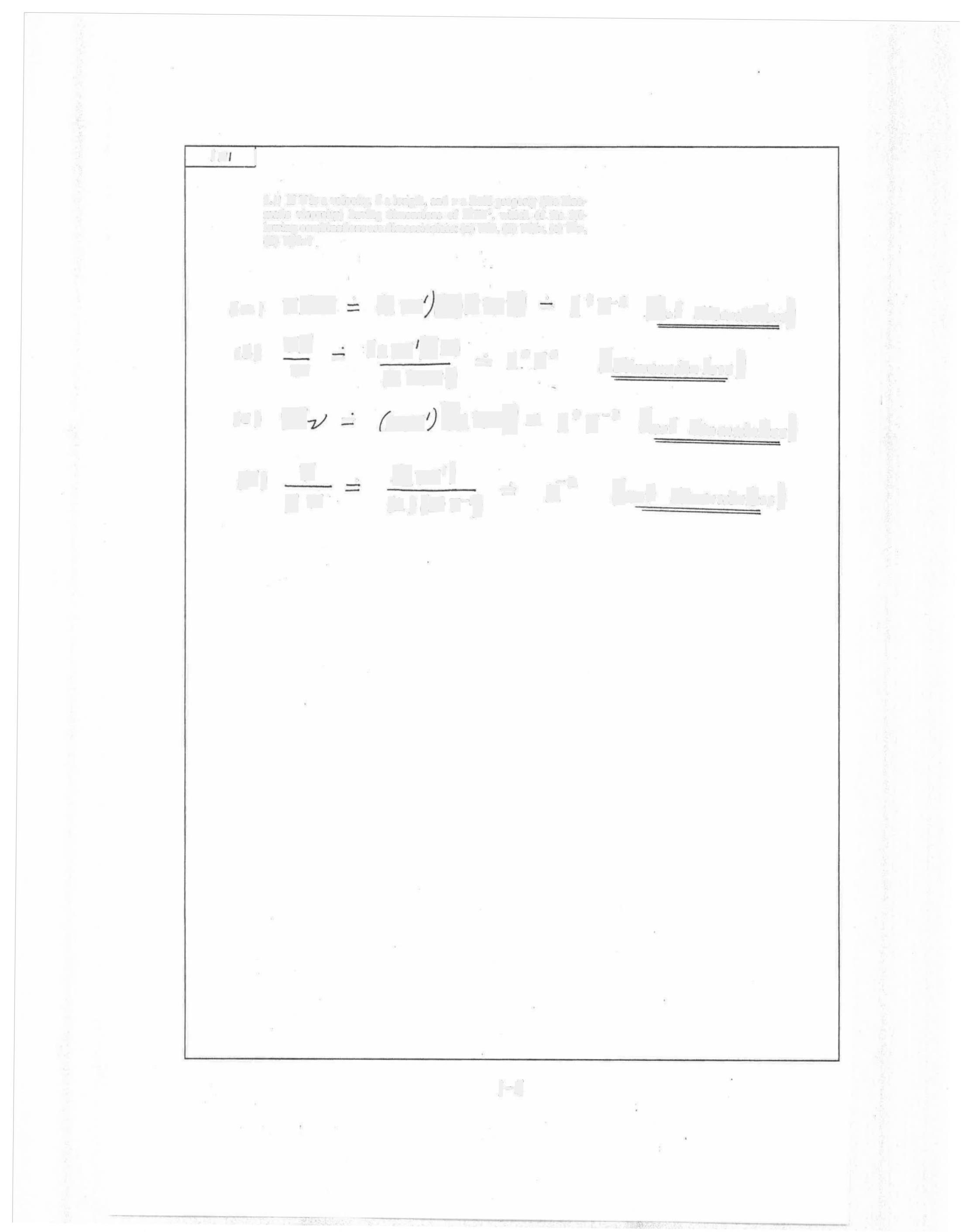
1.12If V is a velocity, determine the dimensions of Z, a, and G, which appear in the dimensionally homogeneous equation
V=Z(a -1) + G
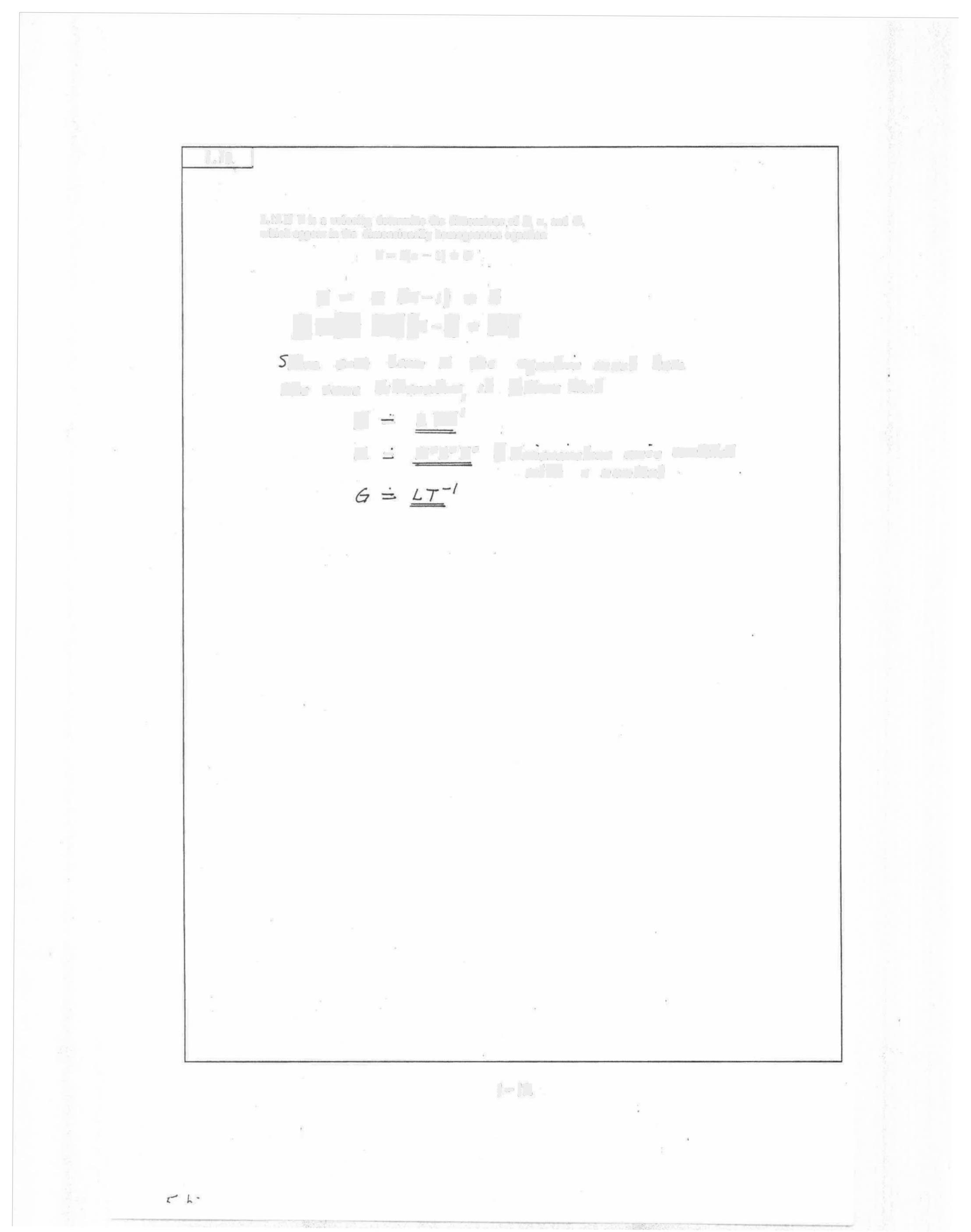
/ = 7 (¢-1) + G
[IN«-)+ (6J
hce ca«ch ~err » The <4alien mus# have the 5ame dimensions it fllos the! l
z = LT'
Gd. - p?[97° (dimensionless amce obied uoih « number)
J,[3The volumerate of flow, Q, through a pipecontaining a slowly moving liquid is given by the equation
where R is thepipe radius, Ap the pressure drop along the pipe, a fluid property called viscosity (FLT), and & the length of pipe What arethedimensions of the constant 7/8? Would you classify this equation as a general homogeneous equation? Explain
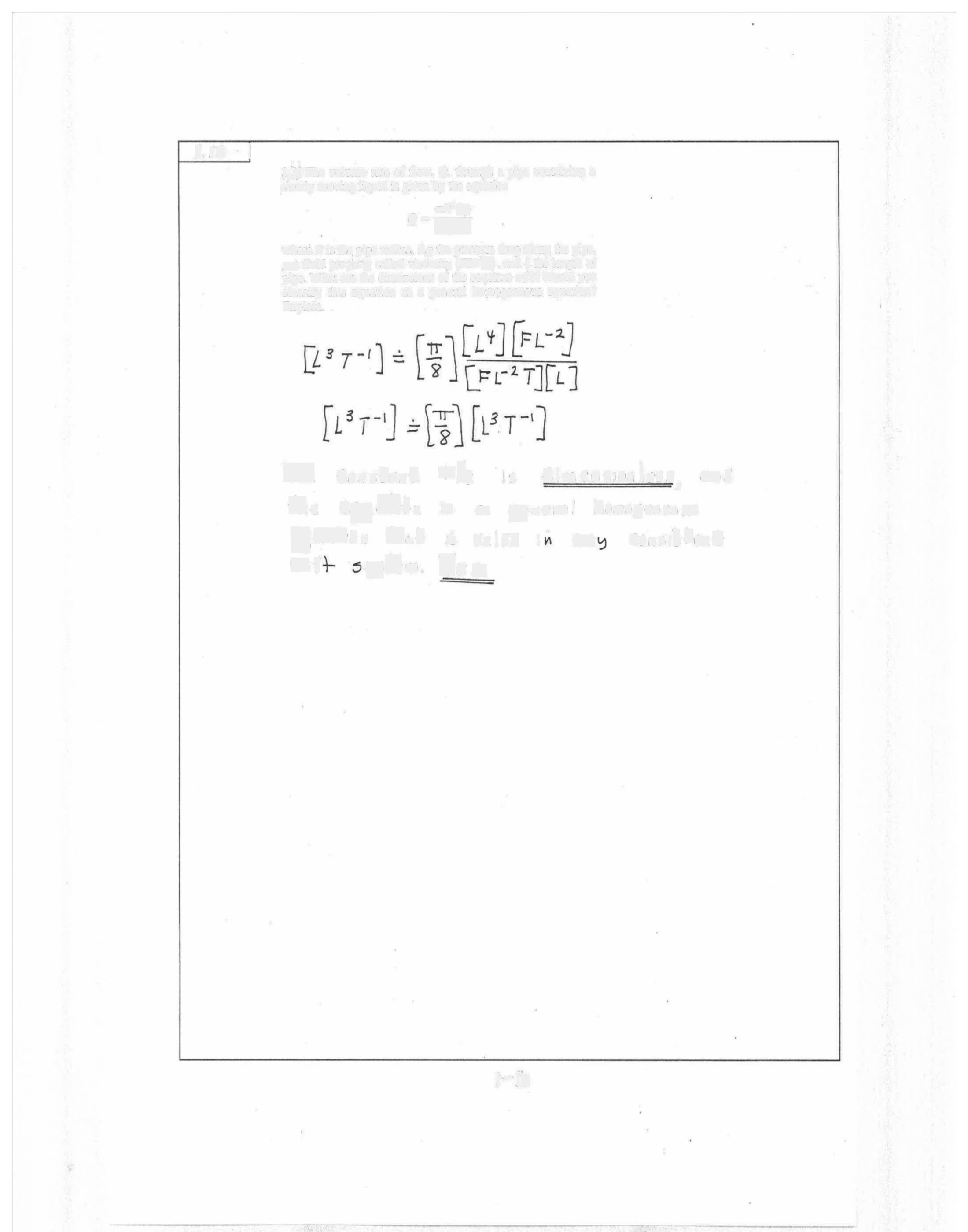
7 Cons±ant 7/% Is dimension less 0 d /e 04ale» 3 (1.. eneral homo9eneo 5
$cb» t»a+ . Vah'd 0 4' 5+em. Yes
Consishet
[ IA According to information found in an old hydraulics book, the energy loss per unit weight of fluid flowing through a nozzle connected to a hose can be estimated by the formula
h=(0.04 t0 0 09)MD/4v/2g where h is the energy loss per unit weight, D the hose diameter, d the nozzle tip diameter, V the fluid velocity in the hose, and g the acceleration of gravity Do you think this equation is valid in any system of units? Explain
[%s»+·«][±]
mnce eac} +er t The ega#n mus± have The 5am¢ dimensions The Cons#rl +em (0.ow h00) mush I
b. dimensionless. Thus The ea&ti» is « 9renal home eneeus €kl, #hal is valid r any 55#m of units. Yes..
1.I5 The pressure difference, Ap, across a partial blockagein an artery (called a stenosis) is approximated by the equation
Aw=K.7, ov e ( ' where V is the blood velocity, µ the blood vis-
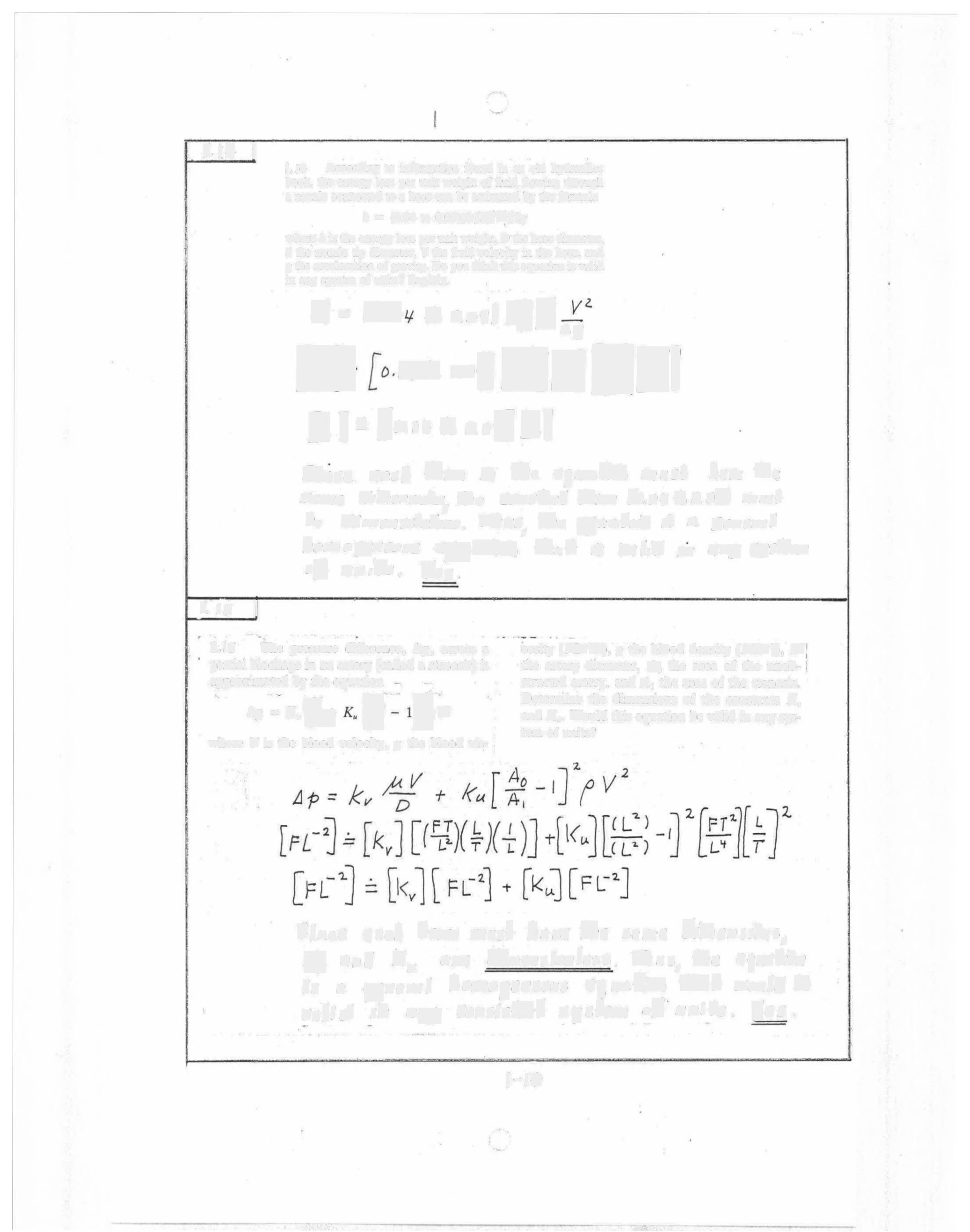
cosity (FLT), p the blood density (ML), D the artery diameter, A the area of the unob• structed artery, and A the area of the stenosis Determine the dimensions of the constants K, and K, Would this equation be valid in any sys• tem of units?
Since &a«ch term mas# have fhe same dimensions, , 0nd K, are iresionless, Thus, the egd#ion is a eneral homogeneous €4a+io Th+ wold be va/icl in an Consis#et sys#em er uni#s. Yes.
I. 16 Assume that the speed of sound, c, in a fluid depends on an elastic modulus, E,,, with dimensions FL , and the fluid density, p, in the form c = (E,)(p) If this is to be a dimen• sionally homogeneous equation, what are the values for a and b? Is your result consistent with the standard formula for the speed of sound? (See Eq 1 19 )
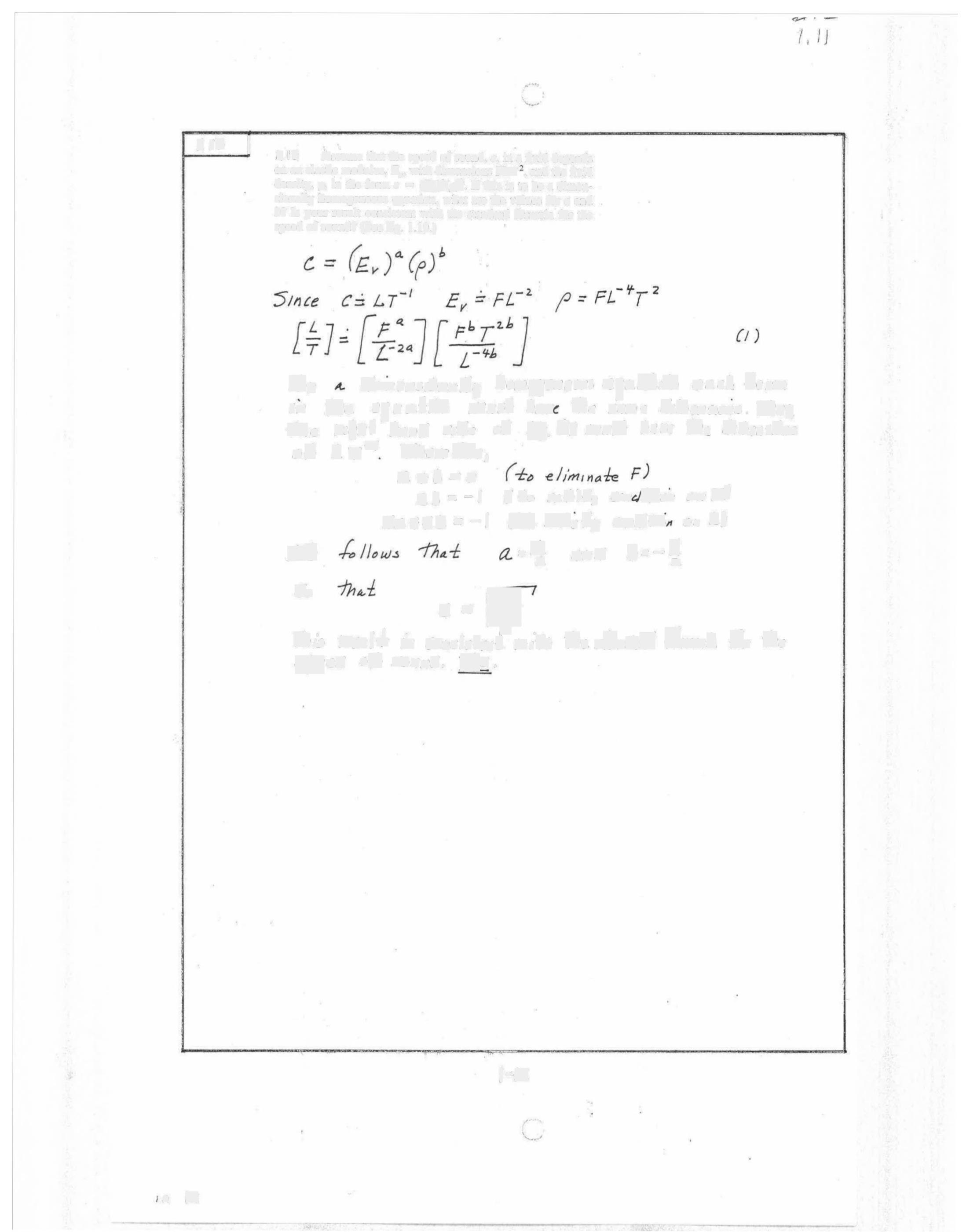
Foy
hvensionall, homogeneous <(u«tic each +erm th The efuato mus+ ha The sane dime»sons Tu5 /he right hand side of Eg.() mus huve Tne driers~ts o£ L7! There re,
C +b =o
Za+44b=-l (le sa#sf, coho »Th ( hsf, dedf en L)
2)=-l
r4 =!- and b=-! So
hu es t s Consislerl wt'h peed e£ sound Yes. 7he
1 I7 A formula to estimate the volume rate of flow, Q, flowing over a dam of length, B, is given by the equation
Q= 3 09BH
where H is the depth of the water above the top = 30 6
of the dam (called the head) This formula gives Q in ft/s when B and H are in feet. Is the con• stant, 3.09, dimensionless? Would this equation be valid if units other than feet and seconds were used? [er)
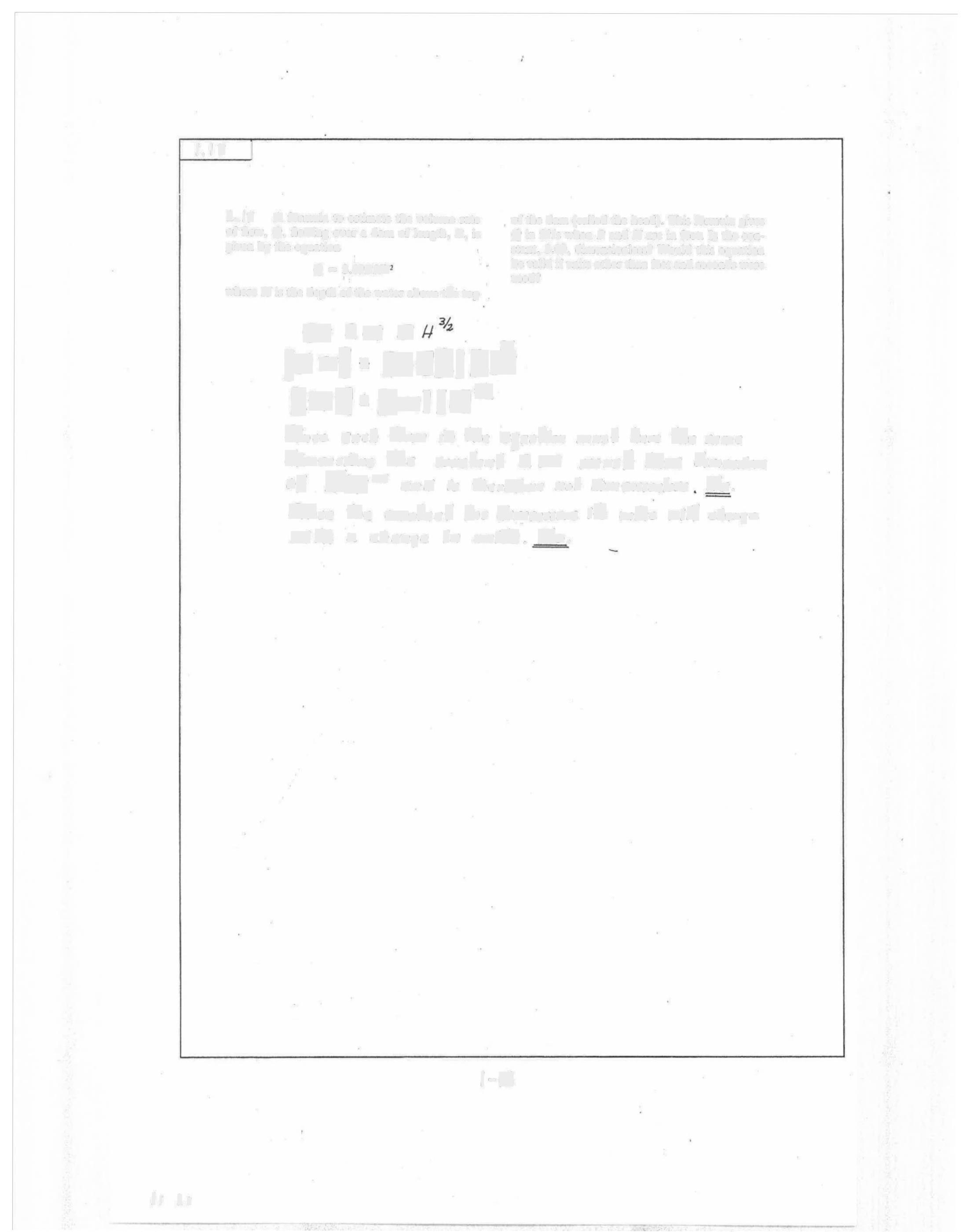
= ooc]tr 3 [rl= [el[)"
jnce each erm in the equation mus# huve the same dimensions the tons#an+ 30 mus} he dimensions of /'7' and is thcreve not dimensionless No
ice The cstar# hus dimensions i#s vale till channe
i th a change in nis lo,
1.I8 Theforce, P, that is exerted ona spher• ical particle moving slowly through a liquid is given by the equation
P = 3DV
where p is a fluid property (viscosity) having di• mensions of FLT, D is the particle diameter, and V is the particle velocity. What are the di• mensions of the constant, 3n? Would you classify this equation as a general homogeneous equa• tion?
•• 37r s dimensionless, qnd the egua#on is a general homogeneous equation. Yes.
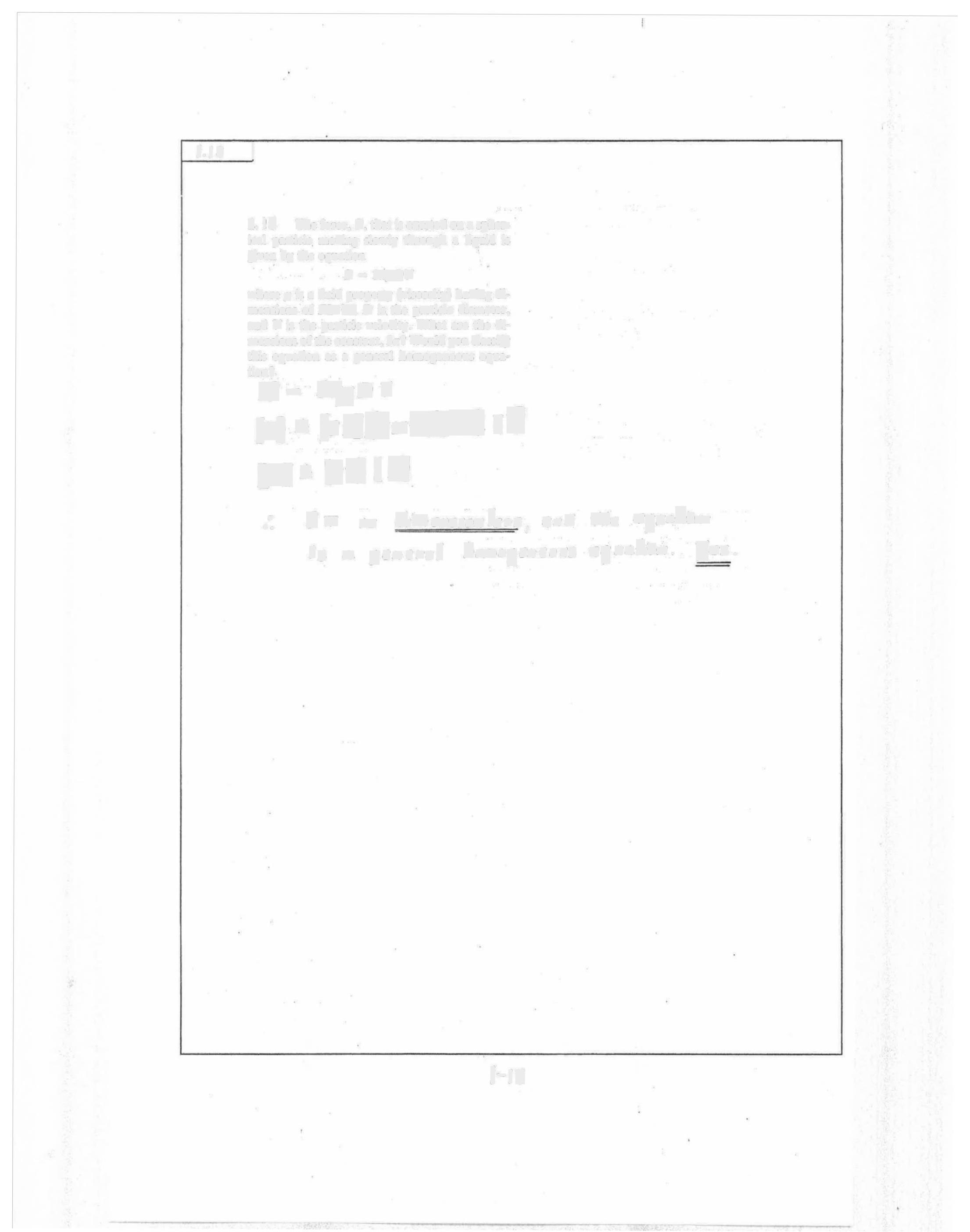
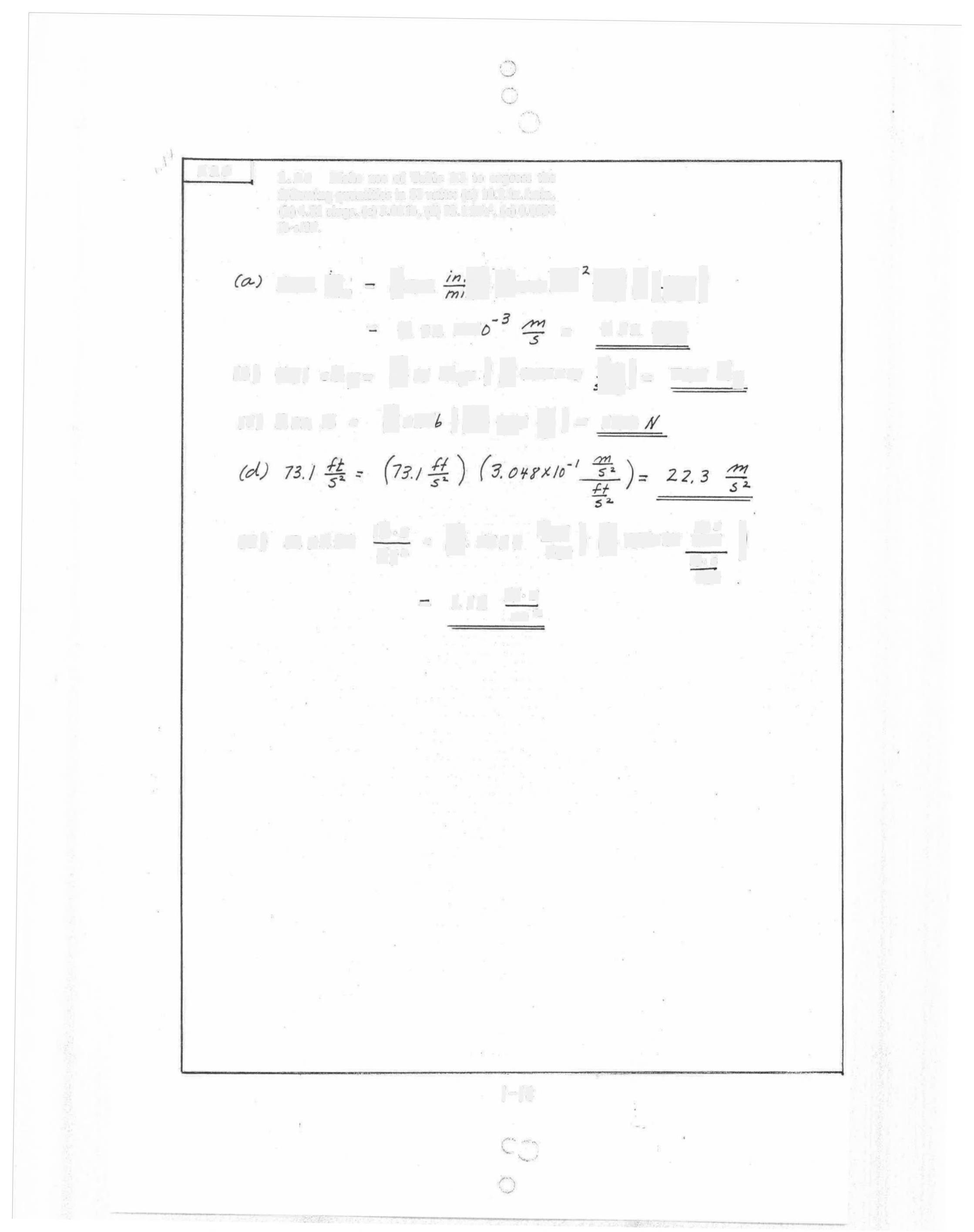
1 21 Make use of Table 1 4 to express the following quantities in BG units: (a) 14 2 km, (b) 8 14 N/n', (c) 1 61 kg/m', (d) 0 0320 Nm/s, (e) 5 67 mm/hr
